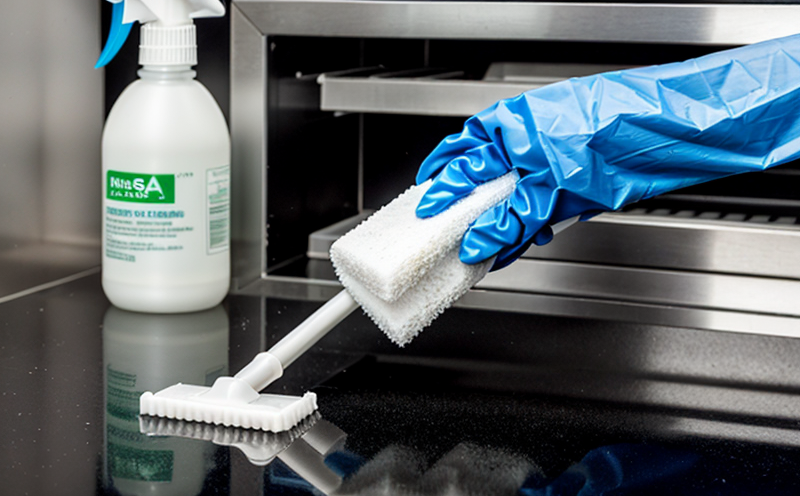DIN EN ISO 846 Microbial Resistance Testing of Plastics for Hygiene Applications
The DIN EN ISO 846 standard is a critical tool in ensuring that plastics used in hygiene applications are capable of resisting microbial contamination. This test evaluates the ability of materials to withstand exposure to microorganisms, which is essential for products like medical devices, toys, and packaging intended for direct contact with food or human skin.
The testing procedure involves exposing plastic specimens to a standardized suspension containing specific types of bacteria and fungi under controlled conditions. The specimens are then observed over time to determine their resistance levels. This process not only ensures product safety but also helps in identifying the durability and reliability of materials used in hygiene products.
The importance of this test lies in its role in maintaining public health standards. By adhering to DIN EN ISO 846, manufacturers can ensure that their products meet international quality benchmarks, thereby gaining consumer confidence and trust. Compliance with these standards also helps companies navigate global markets more effectively.
Understanding the process involves recognizing the various steps involved: specimen preparation, exposure to microorganisms, incubation period, observation phase, and finally, the evaluation of results. Each step is critical in ensuring accurate and reliable test outcomes.
| Test Step | Description |
|---|---|
| Specimen Preparation | The plastic specimens are cut to standard sizes and shapes, ensuring uniformity across samples. |
| Exposure to Microorganisms | Samples are exposed to a standardized bacterial or fungal suspension for a set period. |
| Incubation Period | The samples remain in the incubator to allow microbial growth, typically at specific temperature and humidity levels. |
| Observation Phase | The samples are inspected visually or using microscopic analysis for signs of contamination. |
| Evaluation of Results | Results are compared against the ISO 846 standard to determine microbial resistance levels. |
The results from this test not only help in quality assurance but also provide valuable data for product development and improvement. Manufacturers can use these insights to enhance material selection, optimize manufacturing processes, and ensure compliance with regulatory requirements.
Given the global nature of many industries, especially those related to hygiene products, ensuring that products meet international standards is paramount. This test plays a crucial role in achieving such standards, thereby contributing significantly to public health and safety.
Why It Matters
The importance of microbial resistance testing cannot be overstated, particularly for hygiene products that come into direct contact with human skin or food. These materials must withstand exposure to a variety of microorganisms without compromising their integrity or safety.
- Public Health: Ensures the safety and efficacy of hygiene products used by consumers.
- Consumer Trust: Builds confidence in brands that adhere to rigorous testing protocols.
- Regulatory Compliance: Helps manufacturers comply with international standards, easing market entry.
- Sustainability: Promotes the use of durable materials that meet long-term hygiene needs without compromising on safety.
The results from this testing are crucial not only for meeting regulatory requirements but also for enhancing product design and development. By adhering to DIN EN ISO 846, manufacturers can ensure that their products are safe, effective, and reliable, contributing positively to public health and hygiene standards worldwide.
Industry Applications
DIN EN ISO 846 microbial resistance testing is essential for several industries where hygiene is paramount. Some key sectors include:
| Industry Sector | Products Tested |
|---|---|
| Medical Devices | Surgical instruments, catheters, and other medical devices in contact with patient skin or fluids. |
| Consumer Products | Toys, children’s products, personal care items, and packaging materials intended for direct food contact. |
| Food & Beverage | Plastic containers, trays, and utensils used in the food service industry. |
In each of these sectors, ensuring that materials can resist microbial contamination is critical. The test results provide valuable insights into material performance, helping manufacturers make informed decisions about product design and material selection.
International Acceptance and Recognition
DIN EN ISO 846 has gained widespread acceptance across various countries due to its rigorous testing protocols. This standard is recognized by regulatory bodies worldwide, including the European Union, United States FDA, and other national standards organizations.
- European Union (EU): DIN EN ISO 846 is officially recognized as a harmonized standard for medical devices in Europe.
- United States FDA: The FDA accepts results from this test when evaluating hygiene products intended for use within the U.S.
- Other Countries: Standards organizations such as China’s SGS and Japan’s JIS also recognize DIN EN ISO 846, further validating its global relevance.
The acceptance of this standard in multiple jurisdictions underscores its significance in ensuring the safety and efficacy of hygiene products across international markets. Compliance with DIN EN ISO 846 not only enhances product quality but also facilitates smoother interactions between manufacturers and regulatory bodies worldwide.





